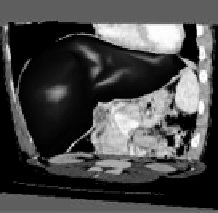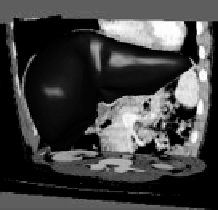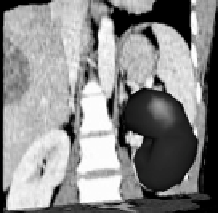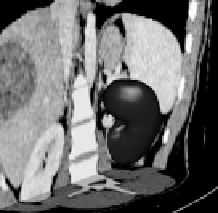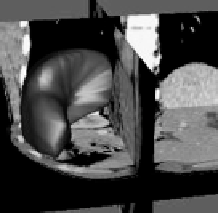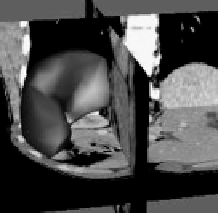Biomedical Engineering Reference
In-Depth Information
Figure 7.11: First row: Polygon mesh and RaG surface approximation of the
liver. Second row: Polygon mesh and RaG surface approximation of the kidney.
Third row: Polygon mesh and RaG surface approximation of the spleen.
regions by triangular meshes took from 10 to 30 seconds and approximation of
the regions with RaG surfaces by the least-squares method took from 40 to 60
seconds. Interactive revision of the initial surfaces to obtain the final surfaces
took from 1 to 2 minutes. All these times are measured on an SGI Octane com-
puter with R10000 processor and 128 MB RAM. Although the time to subdivide
a region into a triangular mesh and the time to fit a RaG surface to a volumetric
region are fixed for a given region, the time needed to revise an initial surface
to a desired one depends on the speed of the user and the severity of errors in
the initial segmentation.
The final result of a segmentation obtained by the proposed system is user
dependent. In a typical image, the user judges what a correct segmentation is
based on his/her past experiences while taking into consideration the infor-
mation present in the image. Since users have different experiences in image
interpretation, results obtained by different users will be different. Even the
same user may segment an image differently at different times. The intrauser
variability and interuser variability are not the characteristics of the proposed
system, but rather those of the users. The proposed system provides tools with
